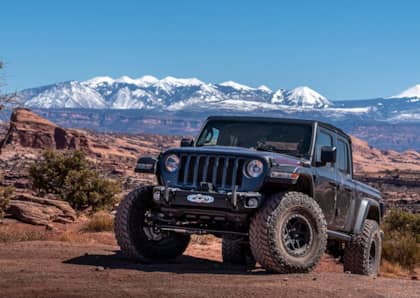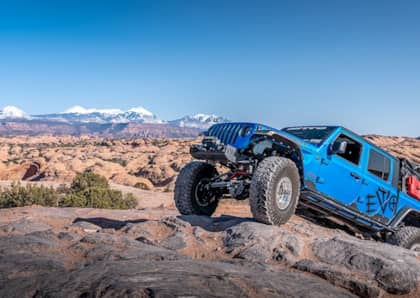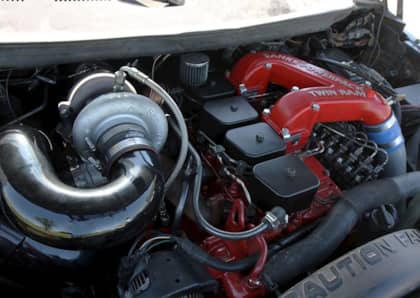One-Piece Versus Two-Piece Driveshaft For Off-Roading
For as long as we can remember, manufacturers have favored two-piece style drivelines over one-piece shafts in longer wheelbase vehicles. A two-piece driveline is one where the front half of the driveline is in a fixed position, while the second half can cycle freely with the rear axle. The two halves are joined by a support bearing. When it comes to off-roading, there’s advantages and disadvantages to this style of driveline. The main advantage is ground clearance. Since the forward half of the driveline doesn’t move, it stays tucked up out of harm’s way. If you had a single-piece driveshaft, it would pivot at the transfer case, which can create serious problems with a long wheelbase vehicle.
On something like our 2020 Jeep Gladiator Rubicon, the breakover angle is already not great. Even with 40-inch-tall Nitto Trail Grapplers, we needed as much help as we could get to prevent our underside from snagging on obstacles on the trail. This is why when it was time to upgrade our drivelines, we opted to go with a two-piece rear driveline configuration from JE Reel. However, there are still a few tradeoffs of this configuration. So, let’s dive into what you need to know and why it’s important.
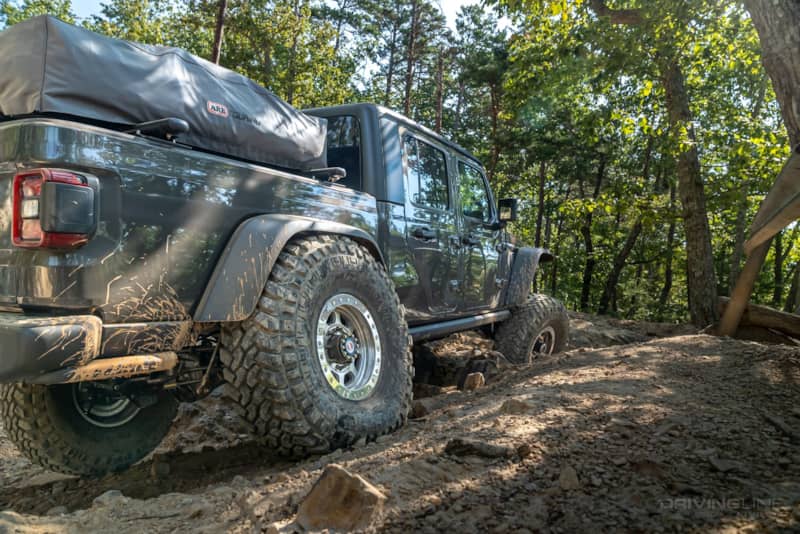
Carrier Bearing
Over the years, the two-piece driveline has gotten a bit of a stigma as problematic. This is primarily due to the carrier bearing. If not shimmed properly or with the drivelines improperly angled, this driveline style can create serious vibration issues. Two-piece drivelines can take more work to dial in, but it’s not impossible. If you’ve recently lifted your vehicle and you notice a new driveline vibration, it can also be because the carrier bearing is simply worn out. Like most bearings, these will wear out. An easy way to check is to press upwards on the shaft close to the bearing. If you have a lot of movement, it’s likely time to replace the bearing.
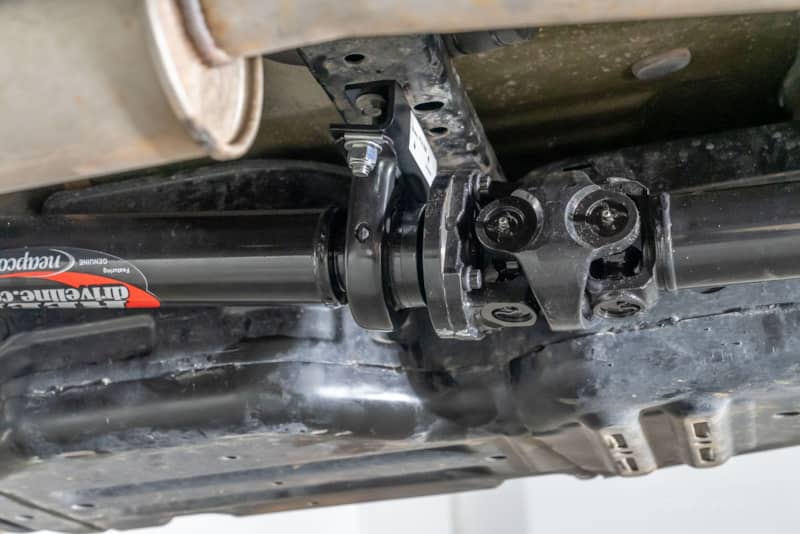
Breakover
When you have a long wheelbase vehicle on the trail, tackling ledges can be especially challenging as it puts your driveline in the line of fire. A single-piece driveline is going to pivot at the transfer case. As the rear suspension cycles downwards, the driveline will move with it, which will rob you of critical clearance.
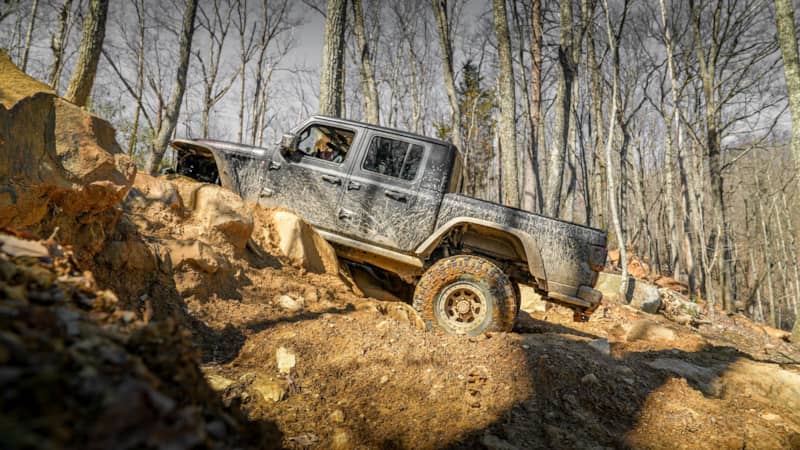
Off-Roading
We’ve actually had the same JE Reel drivelines under our Jeep for a few years now. From the Rubicon trail and Moab to the massive ledges at Windrock Park in Tennessee, we’ve scraped the rear shaft more than a few times. Thankfully, we’ve only needed to touch up the shaft with paint as they’ve been more than robust enough to handle the punishment. We’re certain that if we had gone with a single style driveline it would have met a terrible fate.
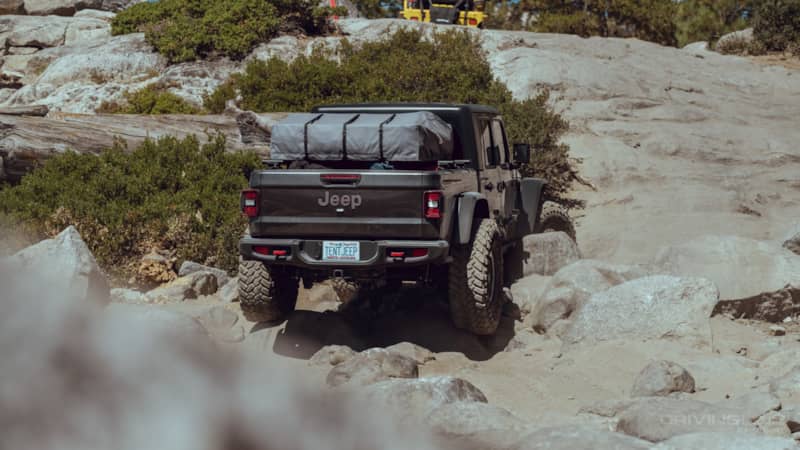
One-Piece Advantage
The main issue with a two-piece driveshaft has to do with suspension travel. With the driveline pivoting much further back, it creates a shorter shaft to cycle with the axle. This means if you have a massive amount of suspension travel, you may max out the double-cardan joint before you do your suspension. This is typically only an issue for more long-travel setups generally designed for going fast in the desert. For most off-the-shelf suspension kits, a two-piece driveline configuration will have plenty of movement to accommodate the travel.
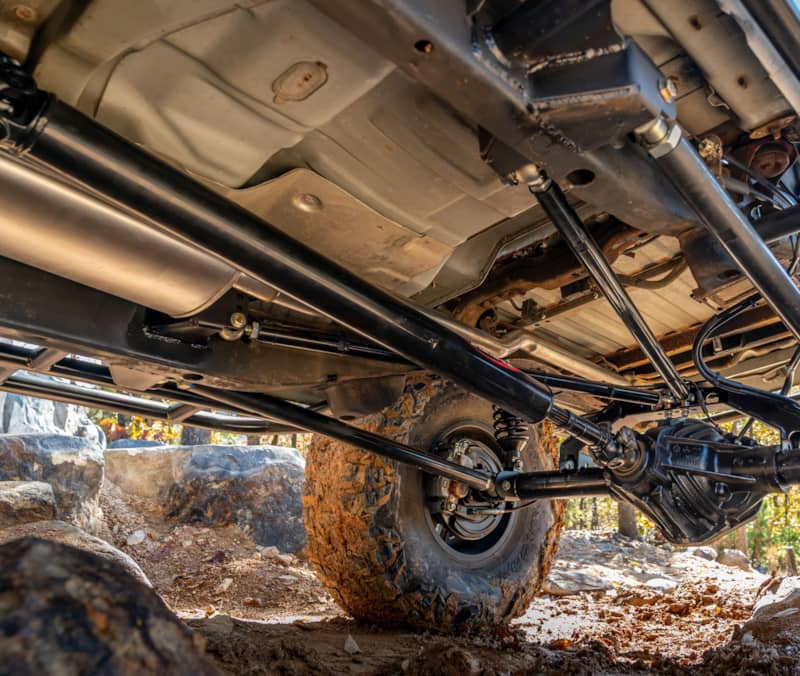
Clear Winner
Jeep knew what they were doing in many respects when they fit the Gladiator with a two-piece rear driveline. Moving to an aftermarket one such as we have provided more travel and durability. For us, the two-piece driveshaft is the right choice and what we would recommend for anyone looking to push the limits of their Gladiator on the trail.
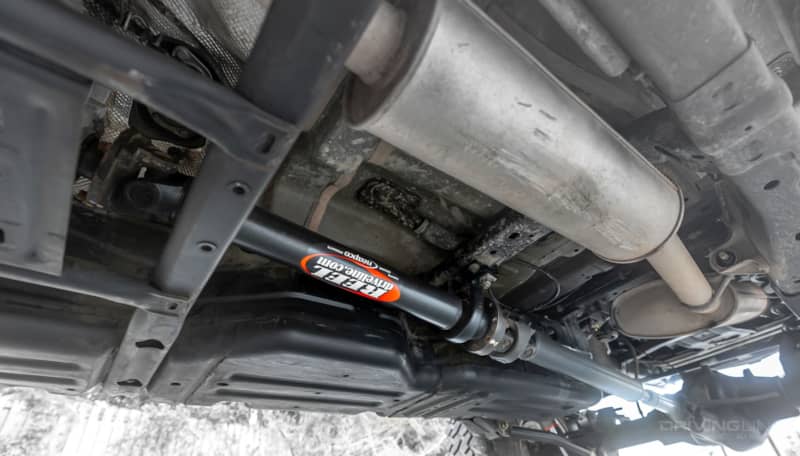
More From Driving Line
- Check out our Jeep Gladiator take on the Rubicon Trail.




